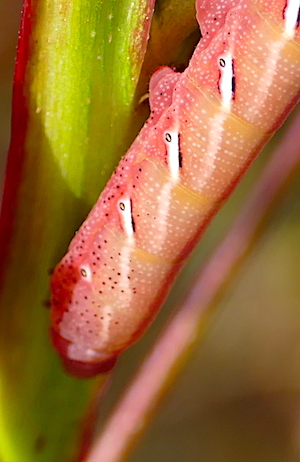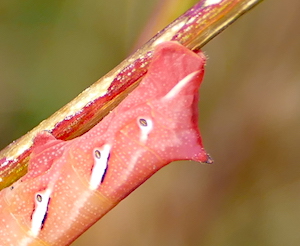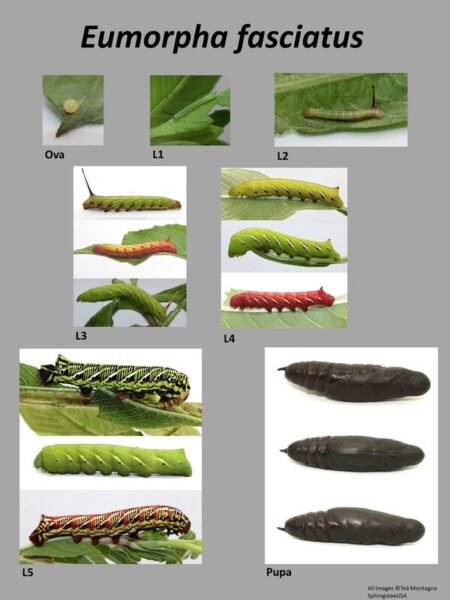Top Photo: Fourth instar banded sphinx moth caterpillar (photo – Ranger Lauren).
What at first appeared to be a new species of sphinx moth caterpillar on the quickly fading wingleaf primrose-willow (Ludwigia decurrens) in our wetlands here at the museum, turned out to be another of many banded sphinx moths (Eumorpha fasciatus) seen this year. It was a 4th instar caterpillar, and so, different in pattern than the preceding 3 stages and the following and final 5th stage of caterpillar development (see below).

It was also smaller than typical, due to the lack of nourishing food. The primrose willow has been fed on by many caterpillars and other creatures leaving slim pickings. And, there’s no new growth due to the advanced season.


Many caterpillars of both moths and butterflies change appearance as they molt. This is one of them. Each instar or stage looks different from the last as illustrated in the following image copied from the Sphingidae of the United States of America site. The site is well worth a visit if you’re interested in sphinx moths, their identification and life histories.

Enjoy the fall weather.